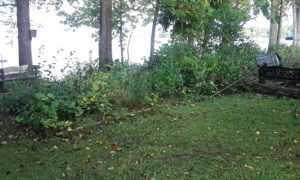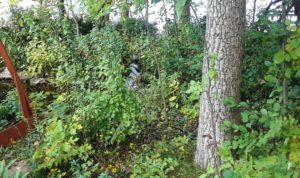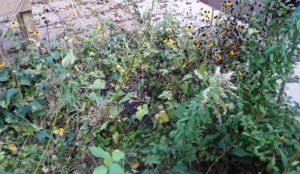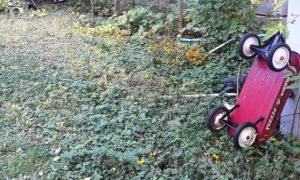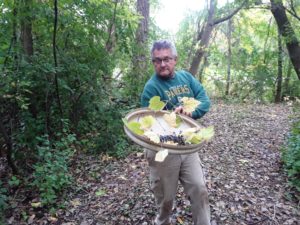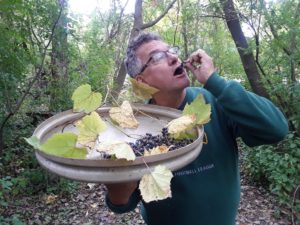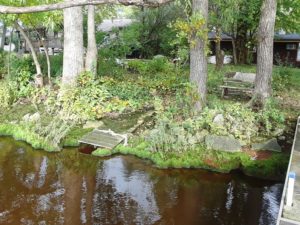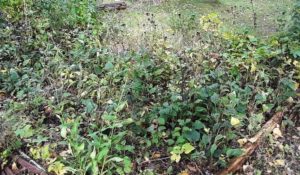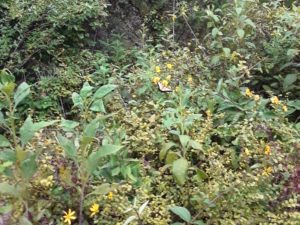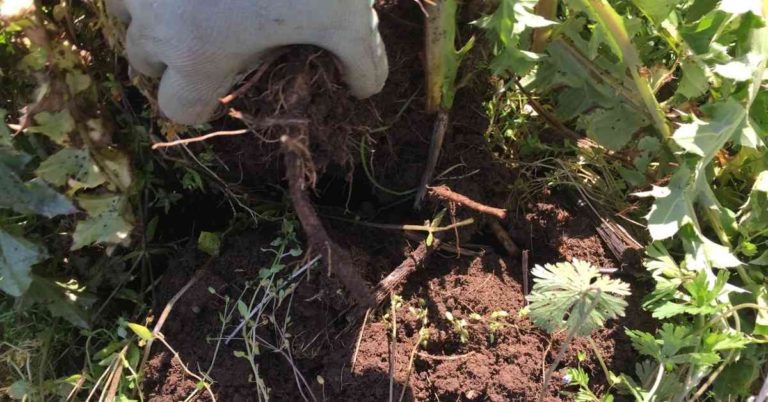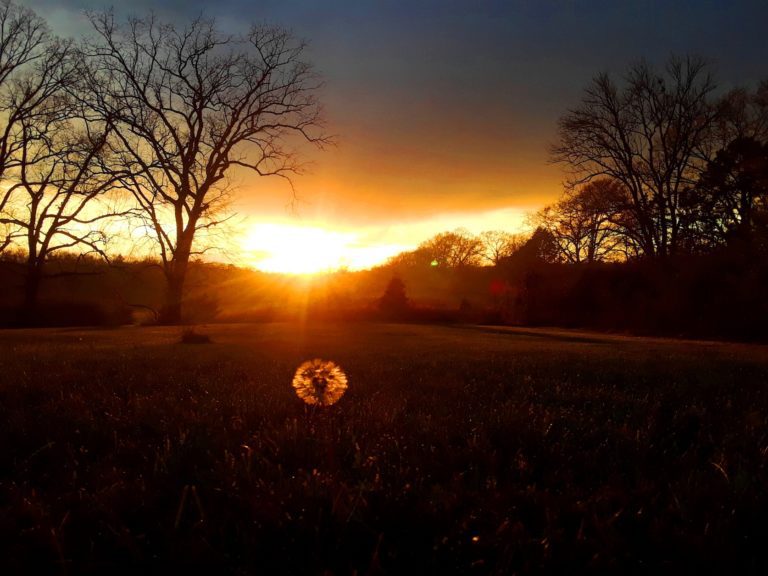Why Make And Maintain A Natural Yard: For The Birds, Bees and Butterflies
Natural yards for the birds, bees and butterflies — and for the pleasure they brings human senses — are nothing new. I personally have created my own natural yard for decades, as has my brother. Where did that inspiration come from? Our forest ranger father, who taught all my siblings that lawns were silly, foolish, a waste of resources, and not following the flow of nature, certainly helped. We also learned from our grandmother, who loved watching birds, butterflies and woodland creatures, and rejoiced in the variety of flora in her natural yard in central Wisconsin.
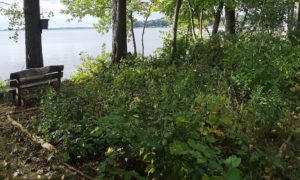
Natural Yards Are Beautiful
Some think that natural yards are ugly, unkept, overgrown junk heaps. I disagree. To me, there is little more spectactular than a yard full of wildflowers, trees, bushes and undergrowth, with its diversity of color, form and texture. Most importantly, those natural yards are full of colorful birds and insects. In the right season, the bright flash of pollintators — butterflies, moths, dragonflies and other insects — the colorful flight and song of birds, the croaking of chirping of frogs, and the scampering of small animals can almost drown out the obnoxious clatter of lawnmowers and leaf blowers.
My parents always fostered a natural yard. When they bought their property in the late 1970s on Lake Winneconne, Wisconsin, they determined that they were going to let it grow natural. He put in lines of white cedar trees to cut off his view of the neighbors and the road. My mom says “I expected something bigger to come; all we got were a bunch of little sticks.” 40 years later those little sticks are 30 feet high, and cut off my folks’ view to the road (and prying eyes from the road to their house!), and all the noise that comes with it.
Finding My Folks’ Natural Yard
When you drive down the lake front road toward my father’s house, you pass dozens of homes owned by folks who have always wanted to have waterfront property. Each of them has a nice front lawn. In fact, I always tell people: “Turn down _____ street. Drive past all of the manicured lawns, houses with a few ornamental trees, homes that you can look right into their front window. As you pass all the lawns, eventually you’ll see a yard that is completely overgrown with trees, bushes and wildflowers. You can’t see a house. When you reach the driveway, turn in there. That’s my folk’s place.”
How to spot my folk’s natural yard home.
Neighbors And Natural Yards
Be prepared: Your neighbors may not like your natural yard. Look at it as a way to enlighten and educate. People often ask my Dad: “Why are you leaving this brush pile? Why are you leaving this tree standing? It’s dead!” Not only does he tell them “Because I want my yard to be more wild.” He shows them how the woodpeckers flock to the trees, and how the brush piles provide shelter for birds, so that even in the dead of Wisconsin’s winter, there is life, color and joy.
This came into play when I was ripping out my dead lawn in a suburb in Seattle. Replacing it with wildflowers and herbs, I was ridiculed by my neighbors. “Your yard is a disgrace to the neighborhood” one told me, as the yard was mostly dirt (until the plants grew in). “You should put in a lawn.”
Perhaps it was karma when, about a year later, there was a drought in Seattle (yes, it happens), and there was a ban on watering lawns. His and other lawns died, while my yard — filled with plants that thrive in dry conditions. (An important side benefit to most natural yards: Most native plants do not require as much water as lawns do. Do you want to decrease your water bill? Plant a natural yard!)
As I saw my herb- and wildflower-hating neighbor out by our mailboxes, I looked over at his brown and dying lawn. Not being able to water your lawn during hot, dry summer months will generally kill it. (Personally, I think dead and brown lawns are wonderful, if and when they lead to people ripping them out and planting a natural yard full of wildflowers and other native plants) Then, I looked at him, smiled, and repeated back to him his own words: “Your yard is a disgrace to the neighborhood. You should fix that.”
He swore at me and walked away.
Governments And Natural Yards
Maybe not surprisingly, some local governments are getting involved in helping folks create natural yards. In Wisconsin, the reason is obvious: lawn fertilizers run off into lakes, rivers and other waterways. And guess what fertilizers in water do? Algae bloom! Which takes oxegen out of the water and causes fish to die off.
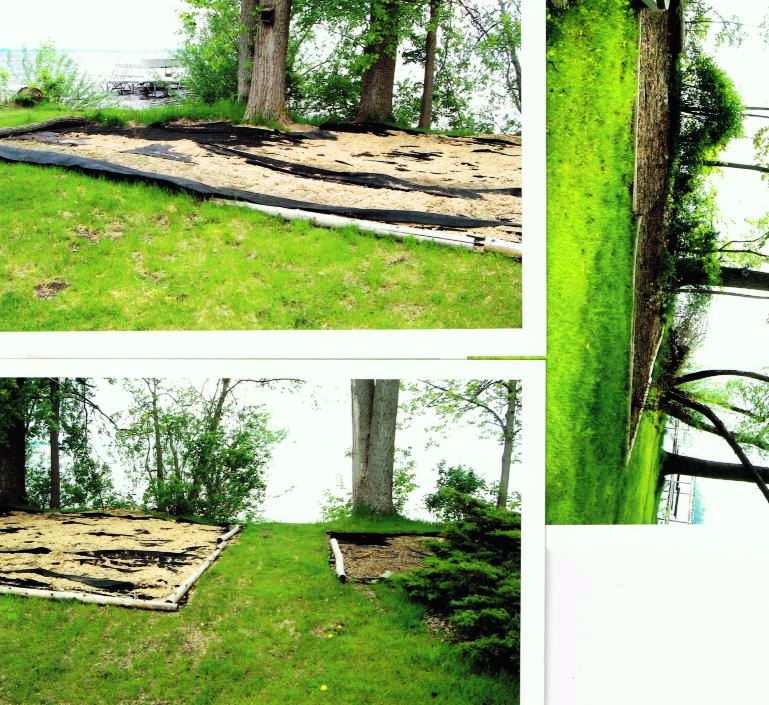
My dad learned about a program in Winnebago County to help create a buffer zone between lawns and the lake. Although my folk’s property is mostly wildflowers, bushes, brushpiles and trees (both living and dead), there is a small area of grass for grandkids to play on and for us to picnic on. My aunt mows it with a reel (push, non-motorized) lawnmower. Although my folks never fertilized that area, it did go right up to the lake. That’s where the county came in.
As part of an experimental natural buffer area program, they paid for native plants, including wildflowers, that my folks could get in creating a 15-foot buffer zone between the lawn area and the lakeshore. The concept is that the buffer zone captures all the runoff from the lawn (and all the chemicals and fertilizer that a normal lawn would have) and prevents it from running off into the lake and contributing to the algae bloom. All my dad had to do was provide the manual labor (i.e., plant the plants). He put down some weed prevention cloth, covered it with topsoil, cut holes in it and planted the plants the county gave him.

In the spring, summer and fall the area is ablaze with brightly-colored wildflowers, as well as pollinators and birds. It also makes it easy to find my folk’s place when approaching the shore from out in the water: As with driving down the road, just look for the overgrown shoreline section where you can’t see a house. That’s my folk’s place.
Natural Yards Are Nature’s Way
Having a natural yard is not really that difficult. They are surprisingly cost-effective. Once they’re established, instead of having to water, fertilize, mow, rake and weed, you can generally just “set it and forget it.” Here’s a haiku I wrote about it:
Natural Yards Aren’t That Hard: Haiku
A natural yard/
isn’t that hard. You just must/
leave Nature alone.
Natural Yard Resources
Natural yards can happen by themselves, but I enjoy giving my property some help. Walmart has many different wildflower seed products, including:
*A great wildflower selection to attract more bees, butterflies and hummingbirds CLICK HERE FOR BEE-UTIFUL WILDFLOWERS!
*A shady wildflower selection CLICK HERE FOR SHADE WILDFLOWERS
